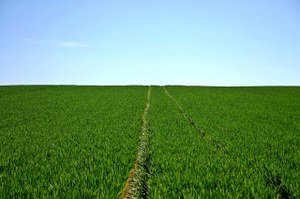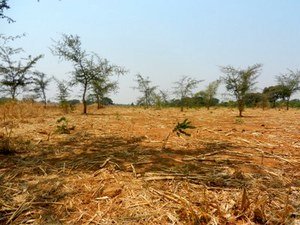Agroforestry and other "ecologically diversified" farming systems can help farmers improve pollination services, boost soil health, lower water use, and diversify their farm enterprises.
What is Agroforestry?
Agroforestry is a land-use system that combines trees, shrubs, or perennial vines with other agricultural crops and/or livestock. Agroforestry provides two major benefits for farmers: it adds perennial components to the farm (adding new long-term income sources) and creates a more diverse system of plants on the farm that better mimics a natural ecosystem.

Monoculture systems, where only one crop is grown at a time, are at higher risk of pest outbreaks and promote lower soil quality than diverse farm systems where multiple crops are grown together at once.
How can Agroforestry Benefit California Farmers?
The majority of modern-day farmland around the globe—and within California—is occupied by relatively simplified and specialized cropping systems, often called “monocultures” or “monocrops.”
Farmers growing monocrops often rely heavily on frequent, energy-intensive inputs like synthetic fertilizers and pesticides to sustain their yields. These practices pose many risks to human health and the environment, such as pollution of groundwater and the evolution of pesticide-resistant “super-weeds” and “super-bugs.”
A farmer who transitions to an agroforestry cropping system can better harness natural processes that directly benefit crop production. Mixing perennials with other crops allows living organisms—trees, bacteria, pollinators, and crop plants—to do the work of exchanging goods and services like nitrogen and organic matter, to the ultimate benefit of the farmer.
Agroforestry systems are more ecologically complex than monoculture systems, but they can also be less reliant on the work of the farmer and the use of synthetic pesticides and fertilizers to sustain desired levels of production.

Alley cropping is a form of agroforestry where rows of trees are interspersed with rows of annual crops. Research shows that alley cropping can provide both short-term and long-term income and improve water use and soil quality on the farm. Photo by the U.S. Department of Agriculture.
The benefits of agroforestry can include:
• Better pollination services by a diversity of pollinators
• Improved soil health
• Lower water needs and better water quality
• Improved air quality
• Improved pest control
• Multistory canopy cover that provides varying levels of shade and sun for animals and plants
• Diversified farm enterprises that sell fruits, flowers, nuts, and/or woods
There are many different ways to practice agroforestry, ranging from planting hedgerows to act as a windbreak or a riparian buffer; interspersing rows of crops between rows of trees and other perennials; raising trees, crops and animals together; or growing annual crops interspersed among the trees in a forest. Click on the icons below to learn more about each type of agroforestry practice (links will take you to the USDA's National Agroforestry Center website). Or, read about farmers who are practicing agroforestry in the section below.
Agroforestry in Action: Farmer Profiles
|
|---|
|
|
Join our California Agroforestry Network!
SAREP is developing a research and communications partnership with farmers across California who are practicing agroforestry or are interested in adopting the practice. Our California Agroforestry Network will study the impacts of agroforestry systems on crop production and farm management and let farmers grow a peer-to-peer network for practitioners of agroforestry working in California’s Mediterranean climate.
If you are interested in joining our network, you can sign up here.






